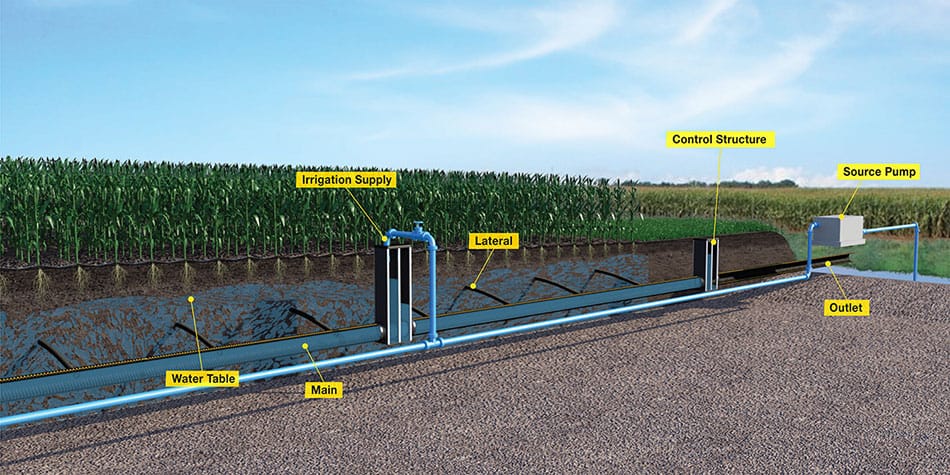
Subsurface Irrigation
Practice Overview
Similar to a controlled drainage system, water control structures manage the water table through the field. However, water is supplied to the system from a ditch, storage pond, or other source to ensure the water table is always at an ideal level. Excess water from rainfall can still be drained through the system.
Benefits
- Higher and less variable yields
- Reduced nutrient loss
- Less energy and water needed to irrigate compared to other irrigation systems
How It Works
Water is supplied to an otherwise controlled drainage system to ensure that the water table is always at an ideal level. Water can be pumped from a nearby well, ditch, or storage pond to each control structure, or to an upstream mainline/manifold. The water essentially fills up the system to the level of the water control structures. A combination of floats, pumps, and automatic valves can be used to automate and optimize the system.
Since water isn’t pumped overhead, subirrigation systems can operate more efficiently than sprinkler irrigation. Also, the water is less exposed to the atmosphere on hot, dry, summer days so there is less evaporation loss compared to other irrigation systems.
Installation Considerations
- Most effective on flat fields
- Lateral spacing should be about 65% closer than traditional drainage
- Soil must have high water holding capacity
- Soil profile must have an impermeable layer to prevent deep infiltration